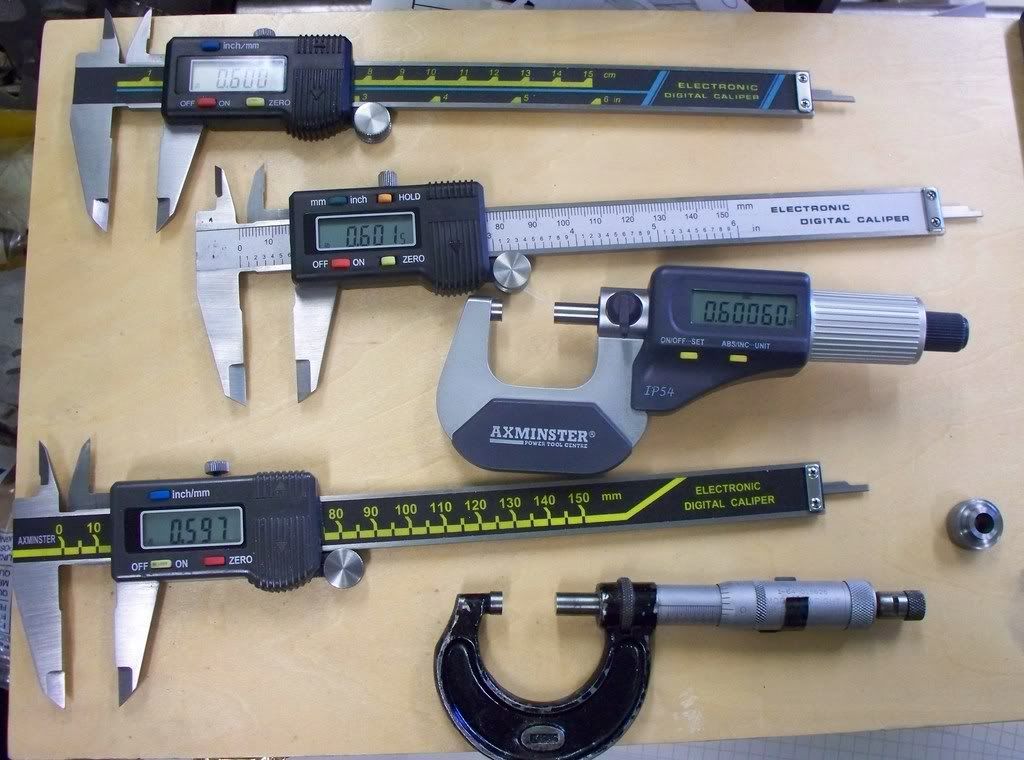Metal Mickey
Well-Known Member
- Joined
- Jul 5, 2008
- Messages
- 612
- Reaction score
- 6
I won't take up too much of your time here. A full write up if you are interested in the detail can be found herehttp://mikes-models.com/blog/?p=218.
Basically I had reason to check some work and found a big difference between the readings of my micrometer and the digital caliper I was using at the time. This lead me to compare other measuring instruments I have. I was surprised with the variation! Perhaps I was naive in my reliance on all things digital!
All equipment was cleaned thoroughly for the results shown in the picture below. I didn't have another mic to compare but it and two other instruments were very close so I believe the difference is in the digital calipers.
What do you think?

For information the micrometer reads just over 0.6 (about 1/3rd of a degree)
Basically I had reason to check some work and found a big difference between the readings of my micrometer and the digital caliper I was using at the time. This lead me to compare other measuring instruments I have. I was surprised with the variation! Perhaps I was naive in my reliance on all things digital!
All equipment was cleaned thoroughly for the results shown in the picture below. I didn't have another mic to compare but it and two other instruments were very close so I believe the difference is in the digital calipers.
What do you think?

For information the micrometer reads just over 0.6 (about 1/3rd of a degree)




